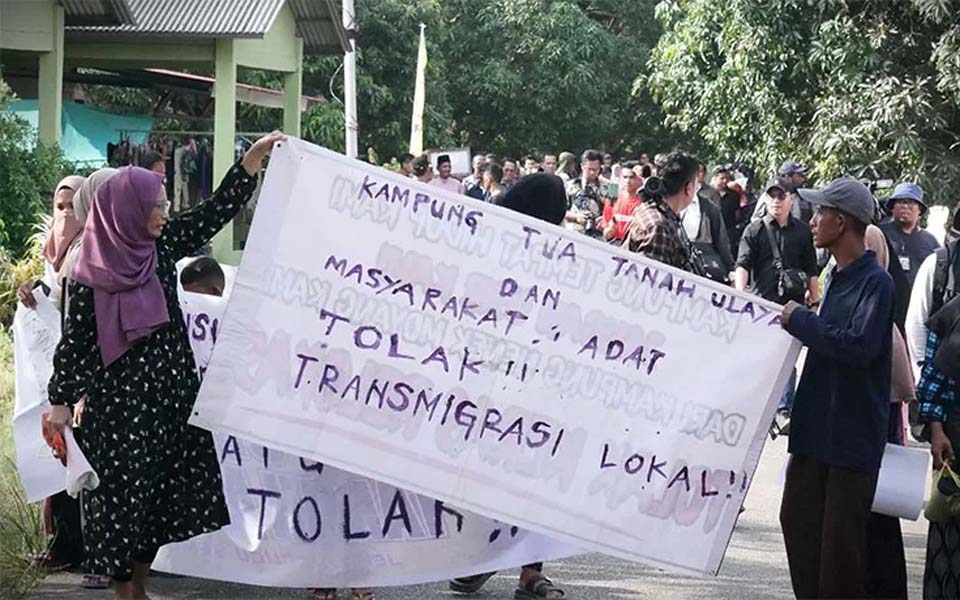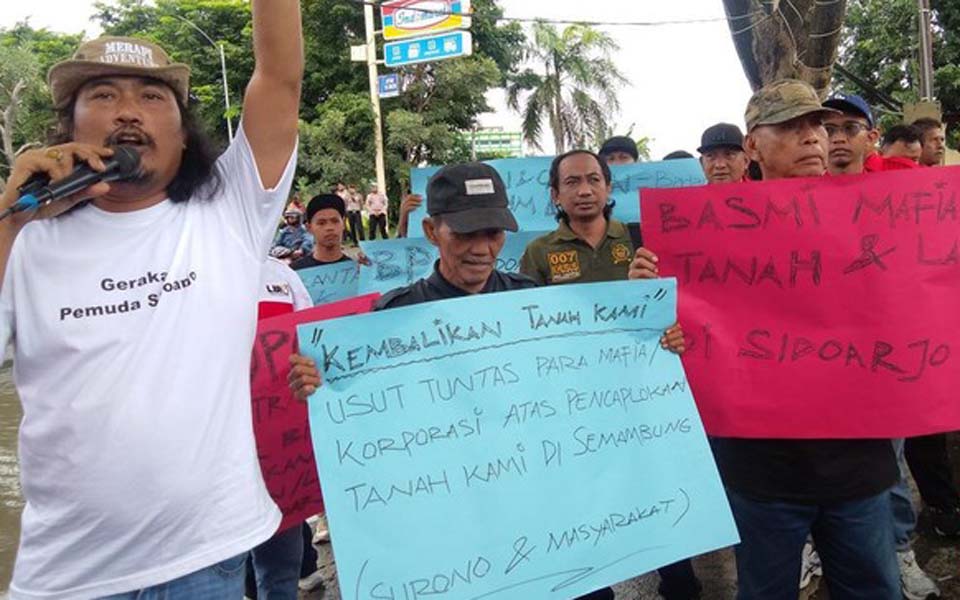Semarang – At least 300 farmers in the plantation area of Rumpun Sari Kaligintung owned by PT Perkebunan Nusantara (PTPN) IX, have complained about the company to the governor. They are demanding that the government revoke the company’s business permit (HGU) because they believe it has implemented a system of forced cultivation on local farmers.
The farmers – some of whom were quite old – arrived at the governor’s office on Jalan Pahlawan in four trucks and bringing banners. During the action, the demonstrators from the National Farmers Union (STN) merely sat and burnt incense. The demonstration was later complimented with speeches and statements.
In their statement they called for plantation company’s (PTP) business permit be revoked, the release of land for the farmers’ use and the supply of cheap technology. They also condemned the unjust actions of local plantation managers.
The chairperson of the Central Java branch of STN, Yoris Sindu Sunarjan, said that the PTP had set a number of rental stipulations that farmers were forced to agree to. He gave the example of farmers being obliged to rent land to plant Sengon Laut (Abbasiyah) trees using their own capital and maintenance. What is strange however, is the produce from the plantation then became fully owned by the state owned company.
“PTP’s land is 148 hectares, only around 15 hectares however is used for tea plantations. Prior to 1997, all of this was uncultivated land. Whereas local farmers need the land to improve their welfare”, explained Sunarjan.
As of 1997 he continued, the land began to be rented to farmers. But not without cost or being burdened with conditions. The farmers in the area had to provide voluntary labour to build a road in the area. At particular times they become tea pickers with a wage of 500-1,000 rupiah per person per day. Working hours were set between 7am to 5pm.
“With stipulations such as this, it is the same as if they had returned to colonial times. Recently they have also been obliged to pay a land rent of 10,000 rupiah for an area of 20x20 metres. What has also been a burden, in order to protect the Segon, PTP carried out spraying. Whereas Segon should be planted with Tumpangsari so the result was that their dry season secondary crops died,” he explained (H12-29t)
[Translated by James Balowski.]















